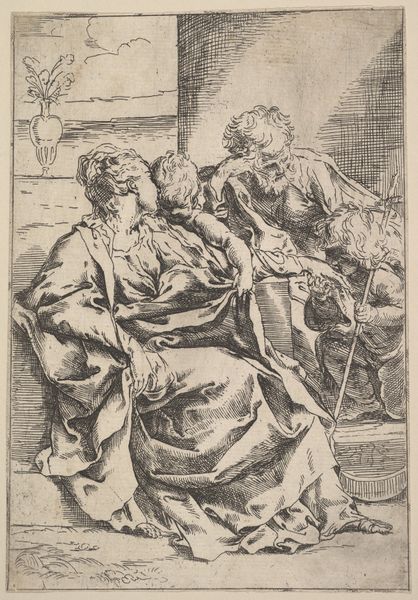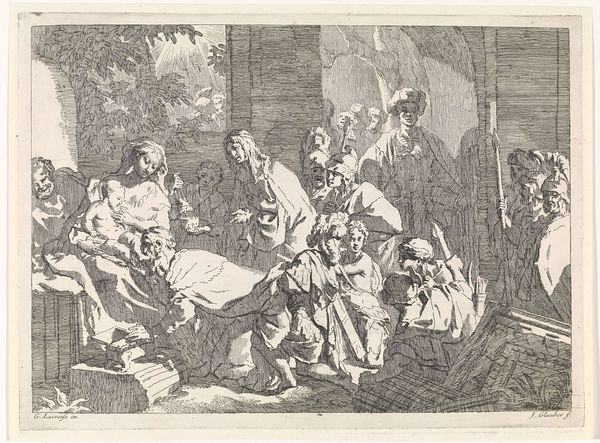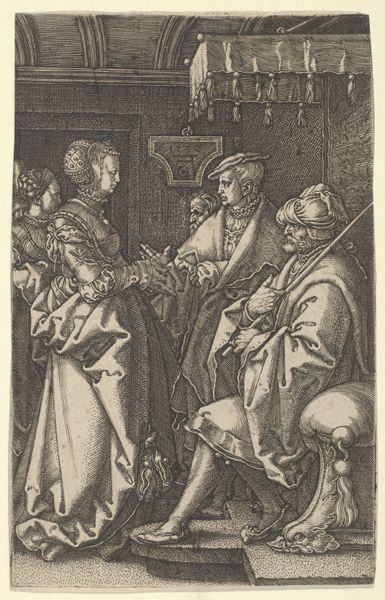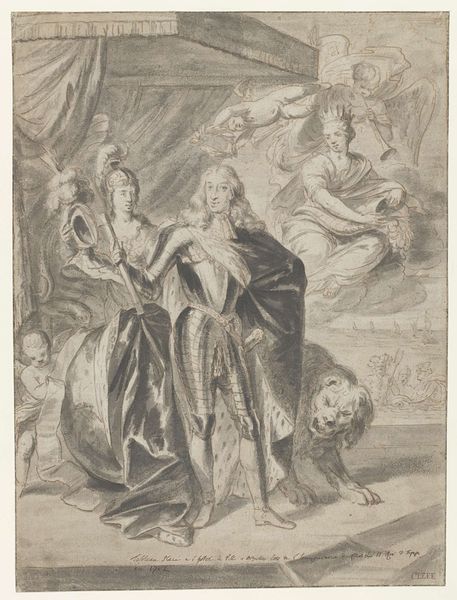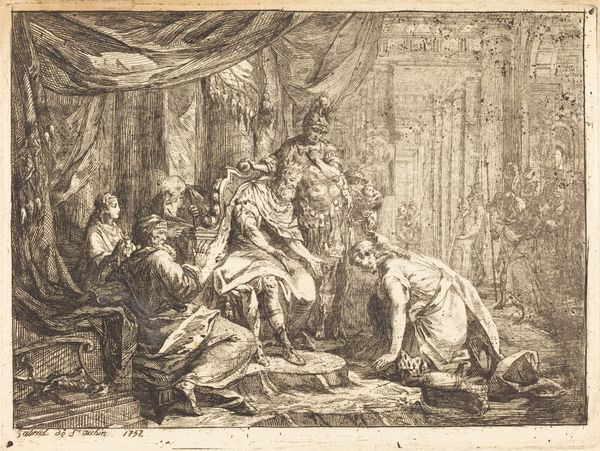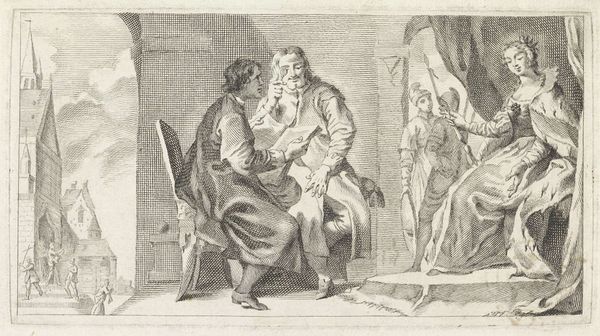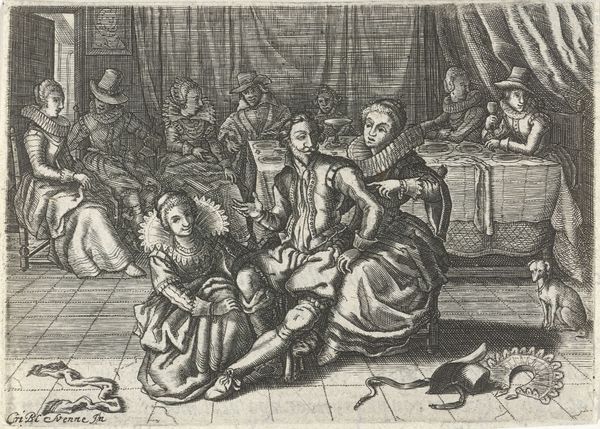
drawing, print, etching, paper
#
drawing
#
narrative-art
#
baroque
# print
#
etching
#
figuration
#
paper
#
genre-painting
Dimensions: 167 × 207 mm
Copyright: Public Domain
Curator: Here we have "Interior with Two Pairs of Lovers and a Fool," an etching on paper created by Johann Liss between 1625 and 1629. It resides here at the Art Institute of Chicago. Editor: Right off the bat, I'm struck by the claustrophobia. The composition feels crowded, almost like everyone is vying for attention in this tiny space. Curator: Indeed. This work participates in the tradition of genre painting, offering a glimpse into scenes of everyday life, albeit a specific, idealized version of it. The depiction of the interior space, along with the figures engaged in flirtation and music-making, presents a view into Baroque society. Editor: Everyday life if you were pretty wealthy, of course, and had someone to play the lute while you wooed your darling! I wonder what that little dog is thinking, though. He looks a bit miserable. Maybe he is the fool. Curator: The presence of a fool—whether a person or suggested symbolically, perhaps by the dog—serves to highlight the fleeting nature of earthly pleasures and passions, also referencing a carnivalesque or theatrical world. Consider the artist’s cultural and religious context. As a German artist working in both Germany and Italy during the Baroque era, Liss was working amid the social disruption of the Thirty Years’ War and rising social unrest. Editor: It's interesting how Liss manages to inject a sense of melancholy into what seems, on the surface, a scene of merriment. All this finery, the lute music, and yet... the figures seem trapped. The way their eyes dart away, no one looks completely comfortable in their skin. You can feel that tension, the unspoken anxieties bubbling under the surface of supposed opulence. Even though it’s over 400 years old! Curator: That reading speaks directly to our contemporary understanding of performance and identity. What appears stable or “natural” may be unstable. This creates the possibility of subversion. The fool, for example, could serve as a commentator on the foolishness of human behavior. Editor: Well, I think both lovers look rather foolish, if you want my opinion. The one on the right actually looks half-asleep. Maybe all that lute music put him to sleep. Curator: I find your reading compelling, and relevant to continued, ongoing conversations about how power functions within interpersonal dynamics. Editor: It makes me wonder: What kind of stories are *we* etching onto paper – or pixels, or whatever – today? And who's the fool in our story?
Comments
No comments
Be the first to comment and join the conversation on the ultimate creative platform.
